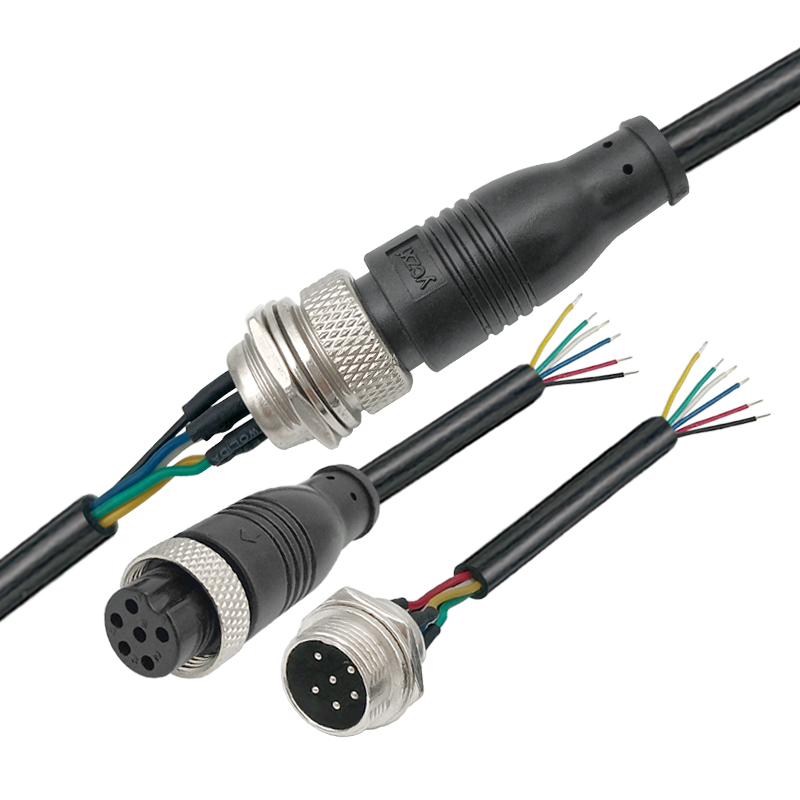Introduction
The rapid advancement of Industrial Internet of Things (IIoT) and smart manufacturing is reshaping the design, functionality, and applications of waterproof connectors. Traditionally used in harsh environments like marine, automotive, and industrial automation, waterproof connectors are now evolving to meet the demands of Industry 4.0, predictive maintenance, and autonomous systems.
This article explores how IoT integration, smart materials, and automated manufacturing are driving the next generation of waterproof connectors, along with the challenges and opportunities ahead.
1. IoT-Enabled Smart Waterproof Connectors
1.1 Real-Time Monitoring & Predictive Maintenance
Embedded sensors in connectors can monitor:
Temperature fluctuations (preventing overheating in high-power applications).
Vibration & mechanical stress (predicting wear in robotic arms or offshore equipment).
Example: A smart M12 connector in an underwater drone alerts operators when saltwater corrosion begins affecting conductivity.
1.2 Wireless Data Transmission & Industry 4.0 Integration
5G & LPWAN (Low-Power Wide-Area Network) enable waterproof connectors to transmit data wirelessly in:
Smart factories (machine-to-machine communication).
Autonomous underwater vehicles (AUVs) (real-time seabed mapping).
Example: A waterproof Ethernet connector with Wi-Fi 6 supports high-speed data transfer in submerged IoT sensors.
1.3 Self-Diagnosing & Self-Healing Connectors
Microfluidic sealing systems can release anti-corrosion agents when damage is detected.
Shape-memory polymers restore deformed connector housings after impact.
2. Smart Manufacturing & Advanced Production Techniques
2.1 Additive Manufacturing (3D Printing) for Customization
On-demand production of waterproof connectors with complex geometries (e.g., lattice structures for better pressure resistance).
Example: 3D-printed graded-material connectors (rigid shell with flexible seals) for deep-sea applications.
2.2 AI-Optimized Seal Design
Generative AI simulates millions of seal configurations to maximize:
Waterproofing efficiency (IP68/IP69K).
Durability under thermal cycling.
Example: An AI-designed multi-layered O-ring reduces failure rates in Arctic offshore rigs.
2.3 Automated Quality Control with Machine Vision
High-speed cameras & AI algorithms inspect:
Microscopic cracks in connector housings.
Seal alignment before shipment.
Example: A smart factory uses robotic arms + vision systems to test 10,000 waterproof connectors/hour.
3. Emerging Materials & Sustainability Trends
3.1 Bio-Based & Recyclable Polymers
Plant-derived plastics (PHA, PLA) reduce environmental impact while maintaining IP ratings.
Ultra-thin, corrosion-resistant coatings improve conductivity in saltwater environments.
Example: A graphene-coated subsea power connector lasts 3x longer than traditional designs.
3.3 Energy-Harvesting Connectors
Piezoelectric materials convert mechanical vibrations (e.g., from waves) into power for IoT sensors.
4. Challenges & Future Outlook
4.1 Key Challenges
Cybersecurity risks in IoT-enabled connectors (encryption needed for data integrity).
Higher costs of smart materials (e.g., graphene, self-healing polymers).
Standardization for next-gen connectors (new ISO/IEC norms required).
4.2 The Road Ahead (2025-2030)
Wider adoption of self-repairing connectors in extreme environments.
Digital twin integration (virtual testing of connector lifespans).
Fully autonomous underwater networks powered by smart connectors.
Conclusion
The future of waterproof connectors lies at the intersection of IoT intelligence, smart manufacturing, and advanced materials. As industries demand higher reliability, real-time diagnostics, and eco-friendly solutions, connectors will evolve from passive components to active, self-sustaining systems.



